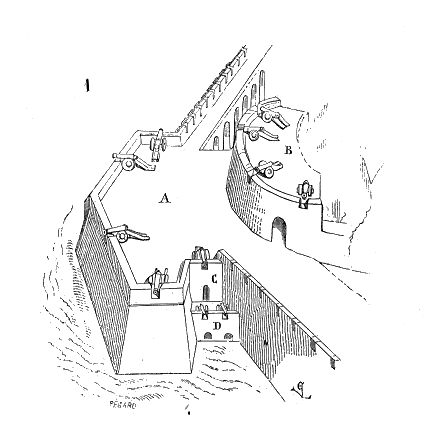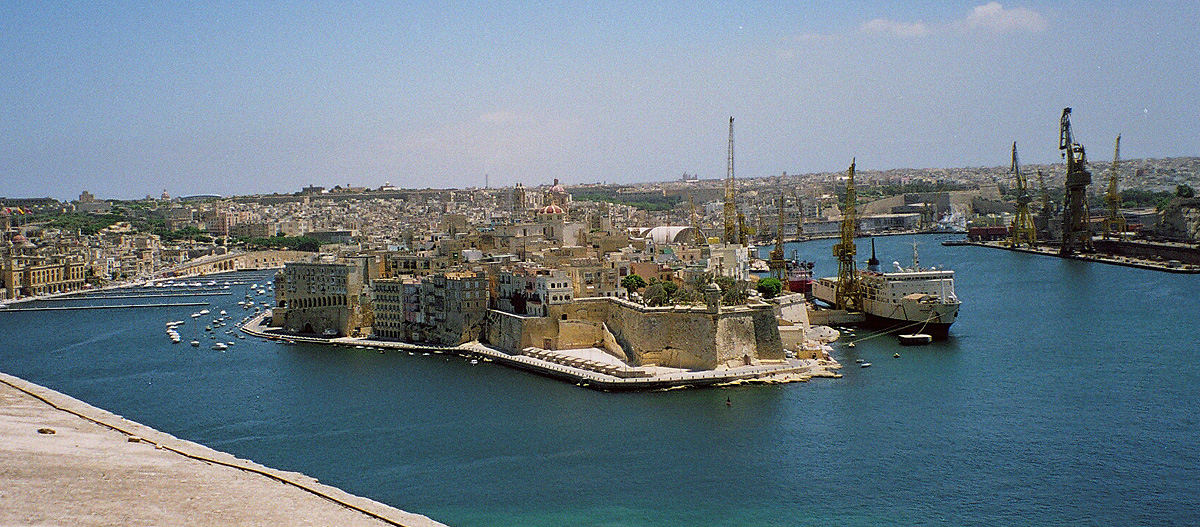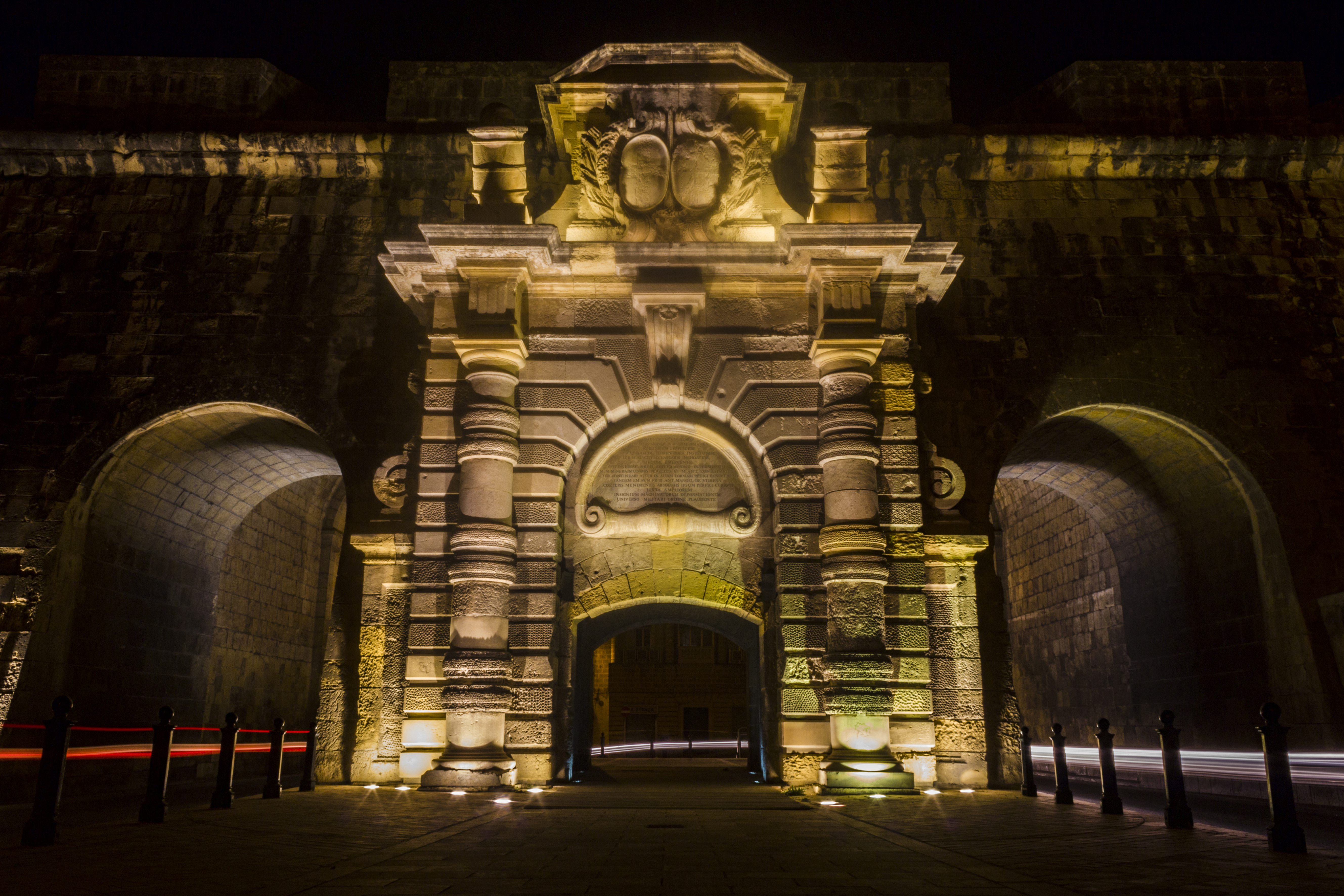|
Fortifications Of Senglea
The fortifications of Senglea ( mt, Is-Swar tal-Isla) are a series of defensive walls and other fortifications which surround the city of Senglea, Malta. The first fortification to be built was Fort Saint Michael in 1552, and the majority of the fortifications were built over the next decade when it was founded by List of Grand Masters of the Knights Hospitaller, Grand Master Claude de la Sengle. Modifications continued until the 18th century, but large parts of the fortifications were demolished between the 19th and 20th centuries. Today, all that remain of Senglea's fortifications are the seaward bastions and part of the land front. Senglea's fortifications have been on Malta's tentative list of UNESCO World Heritage Sites since 1998, as part of the ''Knights' Fortifications around the Harbours of Malta''. History The city of Senglea and its fortifications were built as a result of the Invasion of Gozo (1551)#Malta, attack of 1551. After the attack, the Knights Hospitaller, O ... [...More Info...] [...Related Items...] OR: [Wikipedia] [Google] [Baidu] |
Senglea
Senglea ( mt, L-Isla ), also known by its title Città Invicta (or Civitas Invicta), is a fortified city in the South Eastern Region of Malta. It is one of the Three Cities in the Grand Harbour area, the other two being Cospicua and Vittoriosa, and has a population of approximately 2,720 people. The city's title Città Invicta was given because it managed to resist the Ottoman invasion at the Great Siege of Malta in 1565. The name Senglea comes from the Grand Master who built it Claude de la Sengle and gave the city a part of his name. While Senglea is the 52nd most populated locality on the island, due to its incredibly small land area, it is the 2nd most densely populated locality after Sliema. History During the time of the Knights of St. John, Senglea was also used as a hunting area, and was known as ''L'Isola di San Giuliano''. In 1311 St. Julian's church or chapel was founded in Isola. This was the first building to be constructed on what later became Senglea. On 8 ... [...More Info...] [...Related Items...] OR: [Wikipedia] [Google] [Baidu] |
Fort Saint Elmo
Fort Saint Elmo ( mt, Forti Sant'Iermu) is a star fort in Valletta, Malta. It stands on the seaward shore of the Sciberras Peninsula that divides Marsamxett Harbour from Grand Harbour, and commands the entrances to both harbours along with Fort Tigné and Fort Ricasoli. It is best known for its role in the Great Siege of Malta of 1565. History Background and construction By 1417, the local militia had already established a permanent watch post on the tip of the Sciberras Peninsula. In 1488, the Aragonese built a watchtower on Saint Elmo Point, and it was dedicated to Erasmus of Formia, better known as Saint Elmo. In 1533, the Order of Saint John reinforced the tower due to its strategic location. In 1551, an Ottoman raid occurred in which the Turkish fleet sailed into Marsamxett Harbour unopposed. Due to this, it was decided that a major expansion was necessary, and in 1552 the tower was demolished and a new star fort began to be built. It was designed by a Spanish Engineer n ... [...More Info...] [...Related Items...] OR: [Wikipedia] [Google] [Baidu] |
Upper Barrakka Gardens
The Upper Barrakka Gardens ( mt, Il-Barrakka ta' Fuq) are a public garden in Valletta, Malta. Along with the Lower Barrakka Gardens in the same city, they offer a panoramic view of the Grand Harbour. The gardens are located on the upper tier of St. Peter & Paul Bastion, which was built in the 1560s. The bastion's lower tier contains the Saluting Battery. The garden's terraced arches were built in 1661 by the Italian knight Fra Flaminio Balbiani. They were originally roofed, but the ceiling was removed following the Rising of the Priests in 1775. The gardens were originally used to offer recreation to the knights of the Italian langue of the Order of Saint John, but were opened to the public following the end of the French occupation of Malta in 1800. In the park there are several monuments and memorials to a number of prominent people, including Gerald Strickland, Sir Thomas Maitland and Sir Winston Churchill. A replica of the statue ''Les Gavroches'' (the Street Boys) by t ... [...More Info...] [...Related Items...] OR: [Wikipedia] [Google] [Baidu] |
Carlos De Grunenbergh
Carlos de Grunenbergh, also known as Carlo Grunenberg (died 1696), was a Flemish architect and military engineer active in the late 17th century. He mainly designed fortifications in Sicily and Malta. He was also a member of the Order of Saint John. Career In the mid-17th century, Grunenbergh worked in Spain with his brother Ferdinand. He was eventually appointed as the military engineer of the Viceroy of Sicily, and he designed or modified various fortifications in the last few decades of the century, including the walls of Augusta, Messina and Catania. In 1681, Grunenbergh was invited to Malta by Gregorio Carafa, the Grand Master of the Order of Saint John. He made a number of improvements and modifications to the islands' fortifications. The improvements included the addition of batteries to the fortifications of Valletta and Senglea, and the construction of the Carafa Enceinte around Fort Saint Elmo. Grunenbergh came to Malta again in 1687, and designed and paid for the c ... [...More Info...] [...Related Items...] OR: [Wikipedia] [Google] [Baidu] |
Cavalier (fortification)
A cavalier is a fortification which is built within a larger fortification, and which is higher than the rest of the work. It usually consists of a raised platform within a fort or bastion, so as to be able to fire over the main parapet without interfering with the fire of the latter. Through the use of cavaliers, a greater volume of fire can be obtained, but its great height also makes it an easy target for a besieger's guns. There are two types of cavaliers: *Common cavalier – a raised gun platform without any additional defensive features *Defensible cavalier – a raised gun platform surrounded by a ditch. If the ditch cuts across the bastion's terreplein and is supported by cuts, the cavalier can also be considered as a retrenchment. Gallery Malta - Birgu - Ix-Xatt tal-Birgu - Fort Saint Angelo (MSTHC) 02 ies.jpg, Ferramolino's Cavalier, Fort St. Angelo, Birgu, Malta Malta ( , , ), officially the Republic of Malta ( mt, Repubblika ta' Malta ), is an island countr ... [...More Info...] [...Related Items...] OR: [Wikipedia] [Google] [Baidu] |
Senglea Fortifications Map Original
Senglea ( mt, L-Isla ), also known by its title Città Invicta (or Civitas Invicta), is a fortified city in the South Eastern Region of Malta. It is one of the Three Cities in the Grand Harbour area, the other two being Cospicua and Vittoriosa, and has a population of approximately 2,720 people. The city's title Città Invicta was given because it managed to resist the Ottoman invasion at the Great Siege of Malta in 1565. The name Senglea comes from the Grand Master who built it Claude de la Sengle and gave the city a part of his name. While Senglea is the 52nd most populated locality on the island, due to its incredibly small land area, it is the 2nd most densely populated locality after Sliema. History During the time of the Knights of St. John, Senglea was also used as a hunting area, and was known as ''L'Isola di San Giuliano''. In 1311 St. Julian's church or chapel was founded in Isola. This was the first building to be constructed on what later became Senglea. On 8 May ... [...More Info...] [...Related Items...] OR: [Wikipedia] [Google] [Baidu] |
Malta Today
''MaltaToday'' is a twice-weekly English language newspaper published in Malta. Its first edition was published in 1999, and started out as a Friday newspaper. History ''MaltaToday'' was first published on Friday, 19 November 1999. It was edited by Saviour Balzan, and intended to provide an alternative to the English-language press in circulation, such as the ''Times of Malta The ''Times of Malta'' is an English-language daily newspaper in Malta. Founded in 1935, by Lord and Lady Strickland and Lord Strickland's daughter Mabel, it is the oldest daily newspaper still in circulation in Malta. It has the widest circu ...'' and the '' Malta Independent''. Initially published weekly on Fridays, the paper was then published on Sundays from 2001, with an additional Wednesday midweek paper being reintroduced in 2007. The style of paper is liberal and pro-European, and is independent of political parties. The sister Maltese-language paper ''Illum'' was first published in 2006 ... [...More Info...] [...Related Items...] OR: [Wikipedia] [Google] [Baidu] |
World War II
World War II or the Second World War, often abbreviated as WWII or WW2, was a world war that lasted from 1939 to 1945. It involved the vast majority of the world's countries—including all of the great powers—forming two opposing military alliances: the Allies and the Axis powers. World War II was a total war that directly involved more than 100 million personnel from more than 30 countries. The major participants in the war threw their entire economic, industrial, and scientific capabilities behind the war effort, blurring the distinction between civilian and military resources. Aircraft played a major role in the conflict, enabling the strategic bombing of population centres and deploying the only two nuclear weapons ever used in war. World War II was by far the deadliest conflict in human history; it resulted in 70 to 85 million fatalities, mostly among civilians. Tens of millions died due to genocides (including the Holocaust), starvation, ma ... [...More Info...] [...Related Items...] OR: [Wikipedia] [Google] [Baidu] |
Malta Environment And Planning Authority
The Malta Environment and Planning Authority (MEPA, mt, L-Awtorità ta' Malta dwar l-Ambjent u l-Ippjanar) was the national agency responsible for the environment and planning in Malta. It was established to regulate the environment and planning on the Maltese islands of Malta, Gozo and other small islets of the Maltese archipelago. MEPA was bound to follow the regulations of the Environment Protection Act (2001) and the Development Planning Act (1992) of the Laws of Malta. The national agency was also responsible for the implementation of Directives, Decisions and Regulations under the EU Environmental Acquis as Malta is a member of the European Union, while considering other recommendations and opinion of the Union. The Authority employed over 420 government workers, from a wide range of educational backgrounds, all within their merit of profession. On 4 April 2016, MEPA was dissolved and two new authorities were established to take its place: the Planning Authority and the ... [...More Info...] [...Related Items...] OR: [Wikipedia] [Google] [Baidu] |
Malta Dockyard
Malta Dockyard was an important naval base in the Grand Harbour in Malta in the Mediterranean Sea. The infrastructure which is still in operation is now operated by Palumbo Shipyards. History Pre-1800 The Knights of Malta established dockyard facilities within the Grand Harbour to maintain their fleet of galleys. These were spread between the cities of Senglea, Cospicua and Vittoriosa. 19th century When Malta became a British protectorate in 1800, these facilities were inherited, and gradually consolidated, by the Royal Navy. With the loss of Menorca, Malta swiftly became the Navy's principal Mediterranean base. The Royal Navy Dockyard was initially located around Dockyard Creek in Bormla, and occupied several of the dockyard buildings formerly used by the Knights of Malta. By 1850 the facilities included storehouses, a Ropewalk, ropery, a small steam factory, Victualling Commissioners, victualling facilities, houses for the officers of the Yard, and most notably a dry dock& ... [...More Info...] [...Related Items...] OR: [Wikipedia] [Google] [Baidu] |
Cottonera Lines
The Cottonera Lines ( mt, Is-Swar tal-Kottonera), also known as the Valperga Lines ( mt, Is-Swar ta' Valperga), are a line of fortifications in Bormla and Birgu, Malta. They were built in the 17th and 18th centuries on higher ground and further outwards than the earlier line of fortifications, known as the Santa Margherita or Firenzuola lines, which also surround Bormla. History In 1638, construction of Santa Margherita fortifications began around Bormla but works stopped soon after due to a lack of funds, and they remained in an unfinished state. In 1669, fears of an Ottoman attack rose after the fall of Candia, and a new city, the Civitas Cotonera, named after the reigning Grand Master, Nicolas Cotoner was designed by the Italian engineer Antonio Maurizio Valperga, who also modified the Floriana Lines and some other fortifications of the Grand Harbour. In times of siege, the Civitas Cotonera was meant to offer shelter to the 40,000 island's inhabitants and their animals. ... [...More Info...] [...Related Items...] OR: [Wikipedia] [Google] [Baidu] |
Santa Margherita Lines
The Santa Margherita Lines ( mt, Is-Swar ta' Santa Margerita), also known as the Firenzuola Lines ( mt, Is-Swar ta' Firenzuola), are a line of fortifications in Cospicua, Malta. They were built in the 17th and 18th centuries to protect the land front defences of the cities of Birgu and Senglea. A second line of fortifications, known as the Cottonera Lines, was later built around the Santa Margherita Lines, while the city of Cospicua was founded in the 18th century within the Santa Margherita and Cottonera Lines. The Santa Margherita Lines have been on Malta's tentative list of UNESCO World Heritage Sites since 1998, as part of the ''Knights' Fortifications around the Harbours of Malta''. The lines, also known as Santa Margherita Enceinte, were built to the designs of the Dominican Cardinal Fra Vincenzo Maculano da Firenzuola. History The foundation stone of the Santa Margherita Lines was laid on 30 December 1638 by Grand Master Giovanni Paolo Lascaris. The lines were designe ... [...More Info...] [...Related Items...] OR: [Wikipedia] [Google] [Baidu] |


.jpg)







